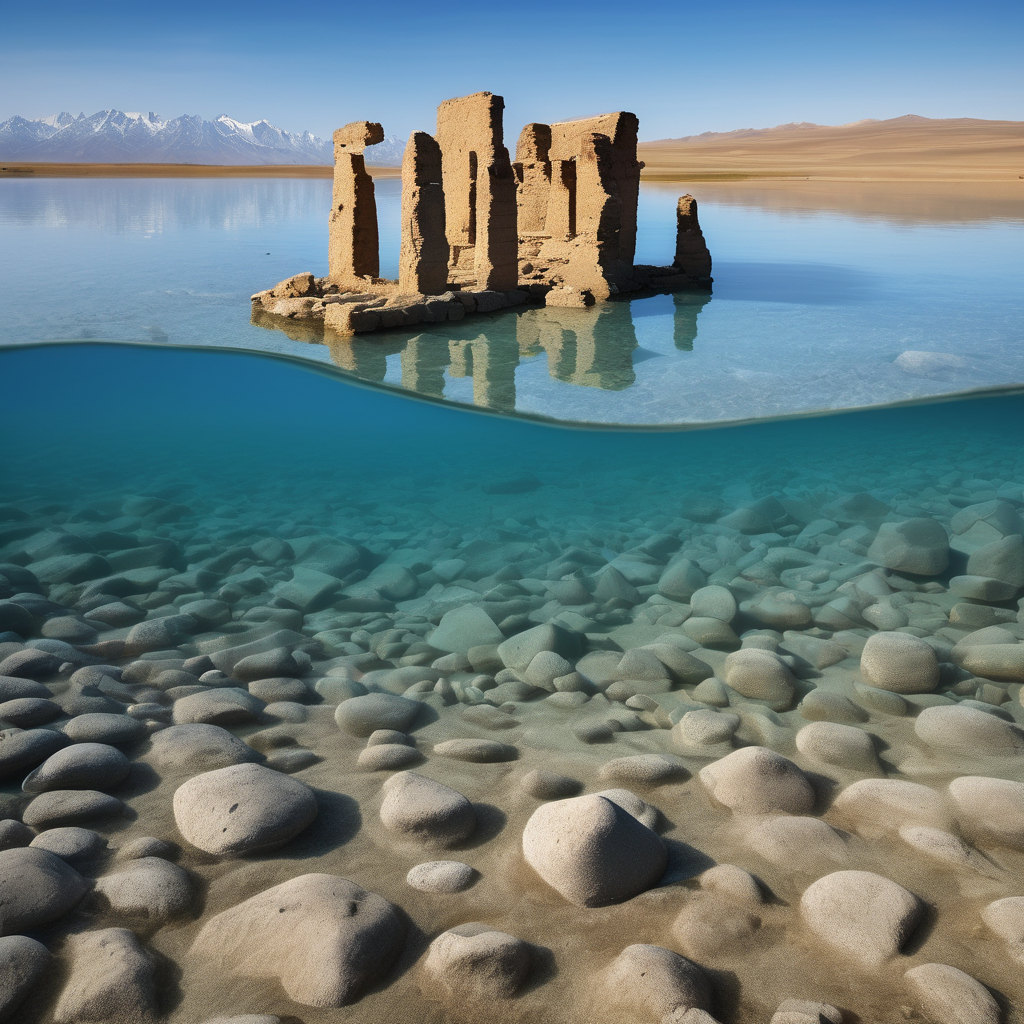Archaeologists have made a significant discovery beneath the waters of Lake Issyk-Kul in eastern Kyrgyzstan, uncovering remnants of a medieval city that once thrived as an important stop on the historic Silk Road. The settlement, known as Toru-Aygyr, was submerged during a catastrophic earthquake in the 15th century.
The excavation efforts, which began in the fall of 2025, have revealed a rich archaeological complex in the northwestern part of the lake, including a medieval necropolis, large ceramic vessels, and the remains of a building constructed from baked bricks, which might have functioned as a mosque or bathhouse.
Lake Issyk-Kul, recognized as the eighth deepest lake globally, was strategically positioned along the Silk Road, the famed trade route that connected travelers and merchants from East Asia to Europe. It is believed that Toru-Aygyr played a vital role in facilitating trade during its peak. The city’s decline began when a powerful earthquake struck in the early 15th century, causing it to sink beneath the lake’s surface.
The archaeological team, sponsored by the Russian Geographical Society, explored various sections of the lake, finding structures at depths ranging from three to 13 feet. Among their discoveries were fire-brick buildings, including a millstone indicative of its grinding capabilities, alongside remnants that suggest cultural practices of the medieval inhabitants.
In one notable section, researchers identified a 13th- or 14th-century Muslim necropolis, which had suffered erosion from the lake’s saline waters. Expedition leader Maksim Menshikov indicated that this discovery likely corresponds to the period during which Islam spread throughout the region due to the influence of the Golden Horde.
The team unearthed several burials aligned in line with Islamic customs, with skeletons oriented toward the Kaaba in Mecca. The preliminary analysis of these remains, which includes two skeletons uncovered in traditional burial positions, promises insights into the historical demographics and cultures of the area.
Further evidence from the excavation revealed medieval ceramics, alongside distinct structures believed to be related to the community’s daily life and religious practices. Notably, archival documents indicate that the area was once under the rule of the Kara-Khanid State, which emerged in the 10th century, fostering a blend of religions including Tengrianism, Buddhism, and eventually Islam.
Despite its historical significance and the prosperity brought on by its location along the Silk Road, Toru-Aygyr faced an abrupt end with the earthquake that led to its submersion. This natural disaster not only altered the geography of the region but also dramatically shifted the population and culture, signaling the decline of a once-flourishing medieval civilization.
The continuing exploration of this submerged city highlights the rich history of Central Asia while offering a glimpse into the life and culture that defined its inhabitants. As archaeologists delve deeper into Lake Issyk-Kul, they hope to unearth more treasures that will further illuminate this fascinating chapter of human history.
